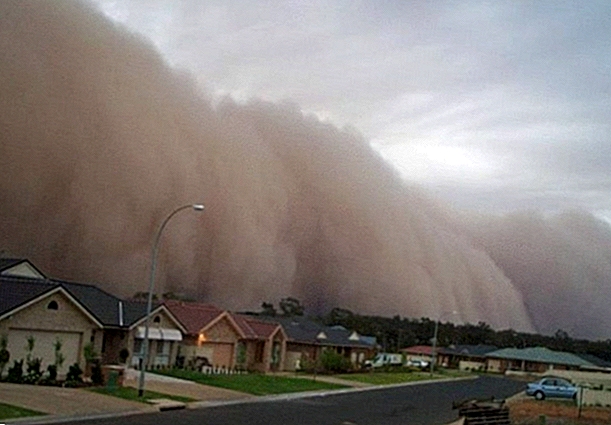- What is a tidal wave?
- Causes of a tsunami
- Consequences of a tsunami
- Differences between tidal wave and tsunami
We explain what tsunamis are, and what their causes and consequences are. Also, are they different from tsunamis?

What is a tidal wave?
It is known as a tidal wave (from the Latin sea, sea, and motus, movement) or sometimes also as tsunami (from Japanese tsu, port or bay, and nami, wave) to a complex oceanic phenomenon in which waves of great Energy and large, displacing quantities of Water far above the ordinary waves of the wind and that can penetrate hundreds of meters into the mainland, destroying everything in its path.
Tsunamis should not be confused with ocean movements produced by the tide, such as boreholes, or with floods caused by storms, hurricanes and tropical storms. Unlike these, tsunamis are generated in most cases as a result of a major tremor or earthquake (or tidal waves, properly speaking, since they occur on the seabed), since the formation of a vibe large-scale marine life requires the transmission of enormous amounts of Kinetic energy the water.
Paradoxically, a slight unevenness in the seabed, even if it is a few centimeters deep, is enough to mobilize an enormous mass of seawater which, upon regaining its physical balance, transmits energy in a very energetic wave capable of traveling kilometers in a short time. time, practically invisible on the high seas, until reaching shallower waters and losing speed due to friction with the I usually, gaining it however in height. This results in a sequence of huge waves.
Tsunamis are feared for their destructive capacity, as seawater rushes into land, and are often some of the biggest concerns in the immediate aftermath of a tsunami. earthquake of considerable magnitude. The area of the world with the most frequent presence of tidal waves is that corresponding to the Pacific Ocean, in the so-called "ring of fire" of enormous underwater seismic activity.
Causes of a tsunami
Tidal waves are the product, just like earthquakes, of commuting of the tectonic plates Under Earth crust. These movements often lead them to collide, face each other, and change their shape, generating friction whose energy is transmitted in the form of vibration, in this case, to the waters.
Similarly, tsunamis are 90% due to tidal waves, or earthquakes that occur very close to shore. Other possible causes of a tsunami are the explosion of volcanoes submarines or the impact in the sea of meteorites Large size.
Consequences of a tsunami
We have already mentioned the main and most feared consequence of tidal waves: tsunamis. The destructive capacity of gigantic and fast waves are widely feared in the stocks coastal areas of the Pacific Ocean, and have been demonstrated time and time again in its history of natural disasters.
On the other hand, tidal waves themselves can induce momentary or permanent changes in the distribution of ocean currents, or even in the Flora and fauna of the seabed.

Differences between tidal wave and tsunami
Although they are normally used as synonyms, there is a technical precision regarding the use of the terms tidal wave and tsunami.
By the first we mean an earthquake that occurred at sea, that is, a violent tectonic movement that occurs on the seabed.The second term, on the other hand, is considered a consequence of said submarine tremor, since it strictly refers to the gigantic wave that is generated by transmitting the seismic vibration to the waters.
However, since 90% of tsunamis are caused by tidal waves, although not all tidal waves necessarily cause a tsunami, they are often used more or less interchangeably in common parlance.
